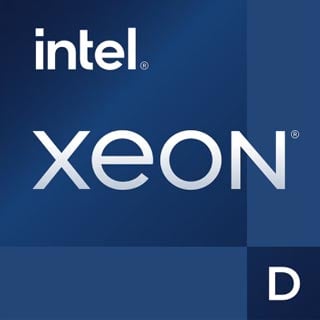UNISOC T710 vs Intel Xeon D-1714
Last updated:
CPU comparison with benchmarks

|

|
|
| UNISOC T710 | Intel Xeon D-1714 | |
CPU comparisonUNISOC T710 or Intel Xeon D-1714 - which processor is faster? In this comparison we look at the differences and analyze which of these two CPUs is better. We compare the technical data and benchmark results.
The UNISOC T710 has 8 cores with 8 threads and clocks with a maximum frequency of 1.80 GHz. Up to GB of memory is supported in 0 memory channels. The UNISOC T710 was released in Q3/2019. The Intel Xeon D-1714 has 4 cores with 8 threads and clocks with a maximum frequency of 3.40 GHz. The CPU supports up to 256 GB of memory in 2 memory channels. The Intel Xeon D-1714 was released in Q1/2022. |
||
| UNISOC 4G (10) | Family | Intel Xeon D (79) |
| UNISOC 4G 12nm (8) | CPU group | Intel Xeon D-1700 (20) |
| 0 | Generation | 4 |
| -- | Architecture | Ice Lake |
| Mobile | Segment | Desktop / Server |
| -- | Predecessor | -- |
| -- | Successor | -- |
|
|
||
CPU Cores and Base FrequencyThe UNISOC T710 is a 8 core processor with a clock frequency of 1.80 GHz. The Intel Xeon D-1714 has 4 CPU cores with a clock frequency of 2.30 GHz (3.40 GHz). |
||
| UNISOC T710 | Characteristic | Intel Xeon D-1714 |
| 8 | Cores | 4 |
| 8 | Threads | 8 |
| hybrid (big.LITTLE) | Core architecture | normal |
| No | Hyperthreading | Yes |
| No | Overclocking ? | No |
| 1.80 GHz 4x Cortex-A75 |
A-Core | 2.30 GHz (3.40 GHz) 4x Sunny Cove |
| 1.80 GHz 4x Cortex-A55 |
B-Core | -- |
Internal GraphicsThe integrated graphics unit of a processor is not only responsible for the pure image output on the system, but can also significantly increase the efficiency of the system with the support of modern video codecs. |
||
| PowerVR GM 9446 | GPU | no iGPU |
| 0.80 GHz | GPU frequency | -- |
| -- | GPU (Turbo) | -- |
| 1 | GPU Generation | -- |
| 12 | Technology | |
| 0 | Max. displays | |
| 3 | Compute units | -- |
| 12 | Shader | -- |
| No | Hardware Raytracing | No |
| No | Frame Generation | No |
| 2 GB | Max. GPU Memory | -- |
| -- | DirectX Version | -- |
Hardware codec supportA photo or video codec that is accelerated in hardware can greatly accelerate the working speed of a processor and extend the battery life of notebooks or smartphones when playing videos. |
||
| PowerVR GM 9446 | GPU | no iGPU |
| Decode / Encode | Codec h265 / HEVC (8 bit) | No |
| Decode | Codec h265 / HEVC (10 bit) | No |
| Decode / Encode | Codec h264 | No |
| No | Codec VP9 | No |
| No | Codec VP8 | No |
| No | Codec AV1 | No |
| No | Codec AVC | No |
| No | Codec VC-1 | No |
| Decode / Encode | Codec JPEG | No |
Memory & PCIeThe UNISOC T710 supports a maximum of GB of memory in 0 memory channels. The Intel Xeon D-1714 can connect up to 256 GB of memory in 2 memory channels. |
||
| UNISOC T710 | Characteristic | Intel Xeon D-1714 |
| LPDDR4X-1866, LPDDR4-1866 | Memory | DDR4-2666 |
| Max. Memory | 256 GB | |
| 0 | Memory channels | 2 (Dual Channel) |
| -- | Max. Bandwidth | 42.7 GB/s |
| No | ECC | Yes |
| -- | L2 Cache | 10.00 MB |
| -- | L3 Cache | -- |
| -- | PCIe version | 4.0 |
| -- | PCIe lanes | 16 |
| -- | PCIe Bandwidth | 31.5 GB/s |
Thermal ManagementThe TDP (Thermal Design Power) of a processor specifies the required cooling solution. The UNISOC T710 has a TDP of --, that of the Intel Xeon D-1714 is 38 W. |
||
| UNISOC T710 | Characteristic | Intel Xeon D-1714 |
| -- | TDP (PL1 / PBP) | 38 W |
| -- | TDP (PL2) | -- |
| -- | TDP up | -- |
| -- | TDP down | -- |
| -- | Tjunction max. | -- |
Technical detailsThe UNISOC T710 has a 0.00 MB cache, while the Intel Xeon D-1714 cache has a total of 10.00 MB. |
||
| UNISOC T710 | Characteristic | Intel Xeon D-1714 |
| 12 nm | Technology | 10 nm |
| Unknown | Chip design | Monolithic |
| Armv8-A (64 bit) | Instruction set (ISA) | x86-64 (64 bit) |
| -- | ISA extensions | SSE4.1, SSE4.2, AVX2, AVX-512 |
| -- | Socket | BGA 2227 |
| None | Virtualization | VT-x, VT-x EPT, VT-d |
| No | AES-NI | Yes |
| Android | Operating systems | Windows 10, Linux |
| Q3/2019 | Release date | Q1/2022 |
| -- | Release price | 216 $ |
| show more data | show more data | |
Rate these processors
iGPU - FP32 Performance (Single-precision GFLOPS)
The theoretical computing performance of the internal graphics unit of the processor with simple accuracy (32 bit) in GFLOPS. GFLOPS indicates how many billion floating point operations the iGPU can perform per second.
|
|
UNISOC T710
PowerVR GM 9446 @ 0.80 GHz |
||
|
|
Intel Xeon D-1714
@ 0.00 GHz |
||
Devices using this processor |
|
| UNISOC T710 | Intel Xeon D-1714 |
| Unknown | Unknown |
Popular comparisons containing this CPUs
back to index


